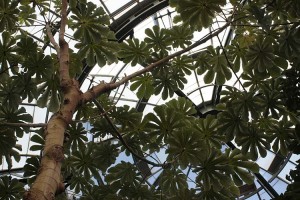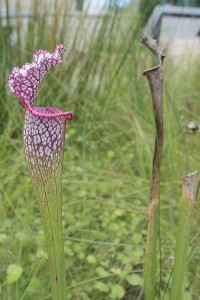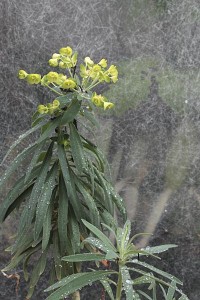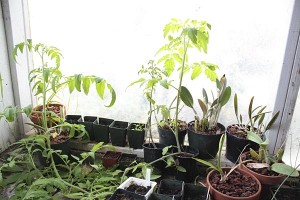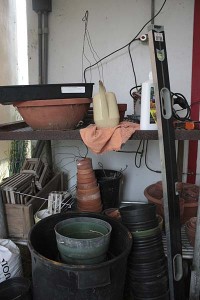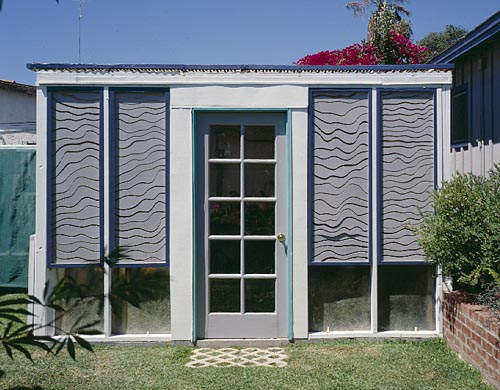I find that I’m asking myself whether I need the greenhouse anymore. Left over from an obsession with warm-growing orchids a couple decades ago, it sits in the middle of some prime real estate in the every-shrinking back yard.
Its current incarnation is more shed than greenhouse, with bags of potting mix and pots taking up most of the space. Still I continue to use it for some propagating. Because of the famous greenhouse effect temperatures inside during the daytime can climb ten to twenty degrees higher than outdoors–and that’s with heavy shadecloth on the western exposure. Even at night it stays a little warmer than the outdoors. Before sunrise during a cold snap a week and a half ago I looked at the thermometer inside: 42 degrees. Pretty cold, but it was but four to five degrees higher than a nearby thermometer outside.


The extra warmth can help seeds germinate a few days earlier than outdoors. And once the plants are up they can grow quite a bit faster. The warm spa temperatures inside the greenhouse, combined with some protection from marauding nature, can give you a leg up on the season.

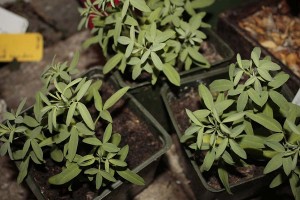
If you’re occasionally impatient like me it’s nice to see bigger plants sooner.
And this last photo shows another advantage of the extra warmth. These are yearling seedlings of the North American pitcher plant, Sarracenia. All three pots were started in the greenhouse a year ago, but the one in the middle spent most of the summer outside in strong sunlight. These plants are supposed to like the intense light, but you can see that they were more partial to temperatures that reminded them of the South than intense sun. For plants that ordinarily take five years to mature, it’s looking like the extra warmth can take a year or two off of the usual time. It’s cool to have a greenhouse to save a few weeks but having it help shave one or two years is pretty persuasive.
So as I talk myself through all this it’s looking like I’ll still want to have some sort of greenhouse, even in Southern California. But it might not be this really inefficient and poorly located greenhouse. And did I mention that the current building has termites?
The replacement might be separate little structures. Maybe they could be enclosed carts and have wheels so that they could be repositioned to take advantage of the best sun angles. And if they’re on wheels they could be stuck in a corner of the yard if they’re not being used for propagation. And something like a cart wouldn’t waste space on aisles to walk down.
Well, there are lots of possibilities, and I’ll be thinking about what to do. I’m one of those people who likes to stare at a problem for a long time, but maybe in a few months you’ll be reading about the next big garden construction project.




